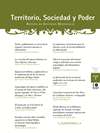Resumen
Resumen: El artículo ofrece una síntesis descriptiva de las primeras noticias sobre el Codex miscellaneus ovetensis (Real Biblioteca de El Escorial, signatura R.II.18). En 1572 Ambrosio de Morales, cronista real bajo Felipe II, visita la librería de la catedral de Oviedo; allí contempla el códice e informa de su existencia y contenidos. En 1599 Juan Gómez Pérez Grial, canónigo de Calahorra, utiliza uno de esos contenidos —el De natura rerum— en la edición crítica de las obras completas de san Isidoro de Sevilla. En 1630 Juan de Fonseca y Figueroa, maestrescuela de Sevilla, expolia el manuscrito por mandato de don Gaspar de Guzmán, conde duque de Olivares. En 1654 Gaspar de Haro y Guzmán, marqués de Heliche, dona el códice a la Real Biblioteca de El Escorial.
Palabras clave: Ambrosio de Morales, librería de la catedral de Oviedo, Codex miscellaneus ovetensis, conde duque de Olivares, Real Biblioteca de El Escorial, Felipe II.
Abstract: The present article offers a short descriptive summary of the first news that we have got about the Codex Miscellaneus Ovetensis (Escorial’s Royal Library, catalogue number R.II.18) [see LOWE, C.L.A., XI, numbers 1631-1634]: it’s, by many reasons, one of the more important manuscripts in the Spanish Early Middle Ages. This book -factitious, palimpsest, composed by ninety five leaves- contains twenty five diferent texts of History, Geography and Patristics. In the year 1572, Ambrosio de Morales, royal chronicler in the reign of Felipe II, visits the Oviedo’s Cathedral Library: in this place see the manuscript and enquires into its existence and contents. In the year 1599, Juan Gómez Pérez Grial, Calahorra’s canon, uses one of those contents -De natura rerum ad Sisebutum- in the critical edition of Isidoro de Sevilla’ Complete Works. Between the years 1577-1580, the aragonese historian Jerónimo de Zurita, transcribes the piece included in the leaves 44rº-47rº and 67rº-82vº: Imperatoris Antonini Augusti Itineraria provinciarum et maritimum. In the year 1613, Luis Alfonso de Carvallo, a jesuit author, assures that the R.II.18 was still in Oviedo’s Cathedral Library. In the year 1630, Juan de Fonseca y Figueroa, Sevilla’s schoolmaster, spoliates the manuscript of the Oviedo’s Cathedral Library by order of Gaspar de Guzmán, Count-Duke of Olivares. Finally, in the year 1654, Gaspar de Haro y Guzmán, Heliche’s Marquis, gives the manuscript as donation to the Escorial’s Royal Library. In this place, under catalogue number R.II.18, is zealously guarded at the present time by José Luis del Valle Merino, the Director. See also about it our recent article titled «Un afamado códice otrora perteneciente a la librería de la catedral de Oviedo», published in the review Boletín de la Asociación Asturiana de Bibliotecarios, Archiveros, Documentalistas y Museólogos, 2/2 (2003), pages 25-28.
Keywords: Ambrosio de Morales, Oviedo’s Cathedral Library, Codex miscellaneus ovetensis, Count-Duke of Olivares, Escorial’s Royal Library, Felipe II.

